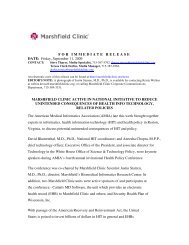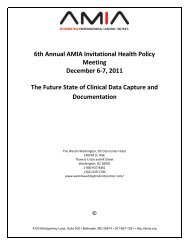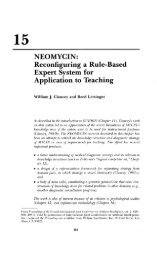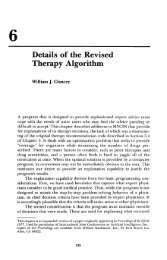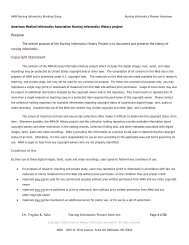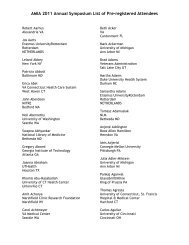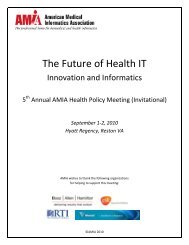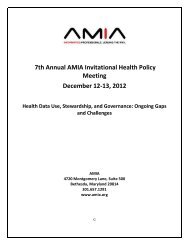Chapter 3 - People
Chapter 3 - People
Chapter 3 - People
Create successful ePaper yourself
Turn your PDF publications into a flip-book with our unique Google optimized e-Paper software.
56 The Evolution of MYCIN’s Rule Formaging our collaborators to justify their questions or decisions, those of uswho were not expert in the field began to tease out "nuggets" of domainknowledge--individual inferential facts that the experts identified as pertinentfor problem solving in the domain. By encoding these facts as individualproduction rules, rather than attempting to decompose them intonodes and links in a semantic network, we found that the experts wereable to examine and critique the rules without difficulty. This transparencyof the knowledge base, coupled with the inherent modularity of knowledgeexpressed as rules, allowed us to build a prototype system quickly andallowed the experts to identify sources of performance problems with relativeease. They particularly appreciated having the ability to observe theeffects of chained reasoning based on individual rules that they themselveshad provided to us. In current AI terminology, the organization of knowledgewas not object-centered but was centered around inferential processes.Our early prototype rapidly diverged from DENDRAL because wewere driven by different performance goals and different characteristicsof the knowledge in the domain. Of particular importance was the needto deal with inexact inference; unlike the categorical conclusions in DEN-DRAL’s rules, the actions in MYCIN’s productions were typically conclusionsabout the state of the world that were not known with certainty. Wesoon recognized the need to accumulate evidence regarding alternativehypotheses as multiple rules lent credence to the conclusions. The needfor a system to measure the weight of evidence of competing hypotheseswas not surprising; it had also characterized conventional statistical approachesto computer-based medical decision making. Our certainty factormodel, to which we refer frequently throughout this book (and which isthe subject of Part Four), was developed in response to our desire to dealwith uncertainty while attempting to keep knowledge modular and in rules.The absence of complete certainty in most of our rules meant that weneeded a control structure that would consider all rules regarding a givenhypothesis and not stop after the first one had succeeded. This need forexhaustive search was distinctly different from control in DENDRAL,where the hierarchical ordering of rules was particularly important forcorrect prediction and interpretation (see <strong>Chapter</strong> 2). Because rule orderingwas not important in MYCIN, the modularity of rules was heightened;the experts did not need to worry about ordering the rules they gave usor 2 about other details of control.Another important distinction between the reasoning paradigms ofDENDRAL and MYCIN was recognized early. DENDRAL generatedhypotheses regarding plausible chemical structures and used its rule set to2The arbitrary order of MYCIN’s rules did lead to some suboptimal performance characteristics,however. In particular, the ordering of questions to the user often seemed unfocused.It was for this reason that the MAINPROPS (later known as INITIALDATA) feature wasdevised (see <strong>Chapter</strong> 5), and the concept of meta-rules was developed to allow rule selectionand ordering based on strategic knowledge of the domain (see <strong>Chapter</strong> 28). The developmentof prototypes in CENTAUR (<strong>Chapter</strong> 23) was similarly motivated.



